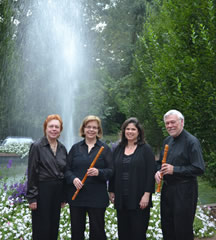The Taylor Theatre on the University of North Carolina at Greensboro campus was the ideal intimate venue for the current three-performance run of Cendrillon (Cinderella) (1899) by Jules Massenet (1842-1912). It is a presentation of the School of Music, Theatre, and Dance. Massenet’s take on the fairy tale makes use of a libretto by Henri Cain largely based upon the version by Charles Perrault. Guest stage director Mark Ross Clark chose to use an English translation by Colin Graham and Stephen Lord. Clark altered the original mythical kingdom setting to New Orleans in 1899 where the theme of the Mardi Gras Ball was Cinderella! The local Krewes or social clubs had the same emphasis on “family breeding” or class prejudice as the original myth.
In Massenet’s version, Pandolfe, a wealthy farmer, has married the widow Madame de la Haltière in order to give his daughter Lucette (Cendrillon) entry into society. Madame (and her two harpy-like daughters) has married Pandolfe in order to exhaust his wealth. Besides henpecking the father, they treat his daughter as a drudge at their every beck-and-call. All but Cendrillon are invited to and go to the Mardi Gras Ball at the opera house. The Prince is expected to pick a princess whom he may marry.
Cendrillon’s Fairy Godmother appears in an extended dream-like sequence accompanied by a bevy of fairies who eventually send Cendrillon to the ball. There she sweeps the Prince off his feet and the rest of the opera leads to matching Cendrillon’s lost slipper. Another dream sequence involves the Prince and Cendrillon finding each other in the Fairy’s woods (or bayou?). Eventually the waning health of the Prince is cured by Cendrillon’s passing the slipper test and all ends happily.
Baritone Harrison L. Bumgardner was a fine Pandolfe who sang with an even, firm voice and with clear diction. Robust projection and good comic timing were highlights of mezzo-soprano Jessica Johnson who pulled out all the stops as the overbearing Madame de la Haltière. Her vocalism was solid across the board and she made a seamless recovery when her Victorian hat almost took off her wig. Soprano Caroline Oliveira as Madame’s daughter Noémie and mezzo-soprano Diana Yodzis as Dorothée made a hilarious team as they tried to outdo themselves. Soprano Bridget Moriarty had plenty of vocal heft and a good, even timbre for the role of Lucette or Cendrillon. Both names are used in the libretto.
Vocal agility on the stratospheric highs of the role of The Fairy Godmother was not the only skill of soprano Joann Martinson who ended her first scene with Cendrillon in a cartwheel that landed her perfectly on the settee. Her high-flying notes were precise and seamless. Tenor Ryan Brock brought a good timbre to the role of Prince Charming. His diction was good as was his expressive shading of dynamics. His relatively weaker projection would not have worked as well in a larger hall.
Minor roles were solidly cast and they all brought a nice sense of humor to their comic business. Baritone Matthew Arnold had little to sing but what he did was firmly projected, and he brought apt dignity to the role of the King. Baritone Daniel Crupi was memorable as the Master of Ceremonies. Baritone Jason Barrios revealed a lovely, rich lower range in the role of the Prime Minister. The nervous ticks of tenor Matthew Reese as the Dean of the Faculty was instantly laugh-provoking. I look forward to hearing him in larger roles.
The choruses of servants and Mardi Gras attendees were well prepared by Liz Doebler and were excellent. They were effectively blocked by Stage Director Clark. No one was credited with real choreography so there were no true ballet sequences such as were a necessity in nineteenth century Paris or a modern big opera house. The six spirits of the Fairy Godmother were soprano Mary Beth Buden, mezzo-soprano Natalie Chamat, soprano Meris Gadaleto, mezzo soprano Ainsley Patterson, mezzo-soprano Maggie Ramsey, and soprano Kari Ringgenberg.
Producer/Music Director/Conductor David Holley led the UNCG Opera Orchestra in an alert and stylish performance. Balance between the pit and stage was excellent. All sections of the orchestra performed well with very good solos from the oboe, cello, and French horn, among others. Flutist Janet Phillips and violist Gizem Yücel managed to combine comedy with their playing as the Court Musicians on stage while ably supported by harpist Grace Wepner Ludtke in the pit.
Matthew Sale’s unit sets were effective as was Alex Ginder’s lighting design. Ragged netting and stark tree outlines made a great setting for the Fairy realm. Derrick Vanmeter’s costume designs made a virtue of a tight budget and made for quite a scenic variety.
The performance of this too rarely presented version of the fairy tale will be repeated April 12 at 7:30pm and April 14 at 2:00pm. See the sidebar for details.











